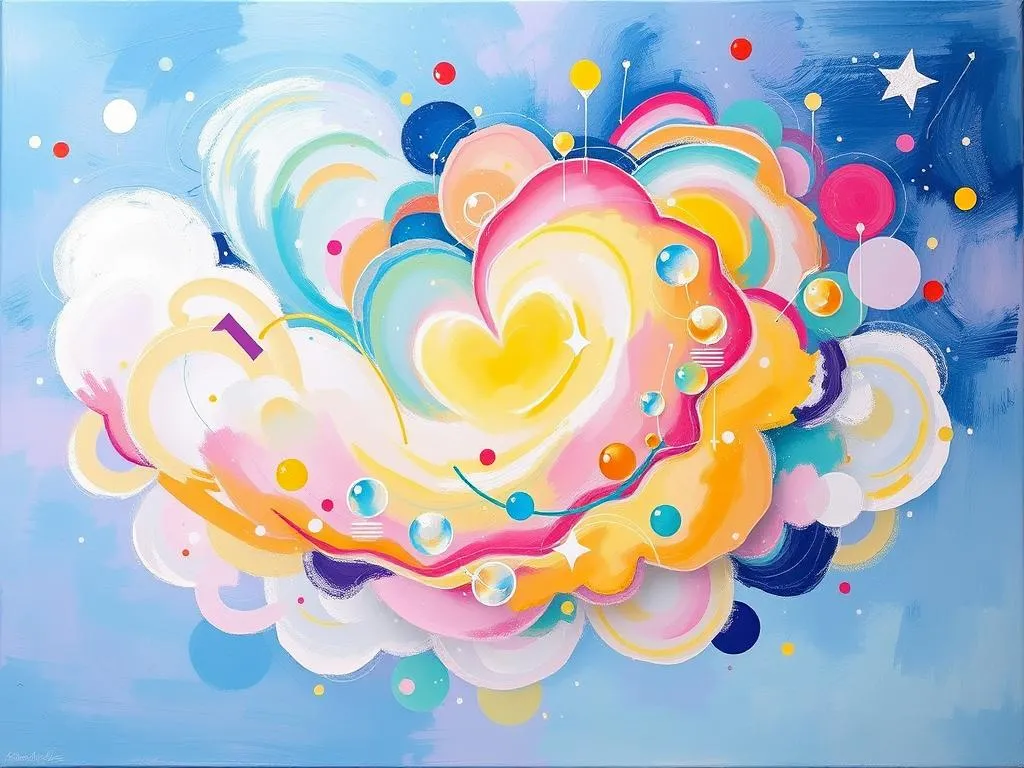
Introduction
Dreams have captivated human curiosity for centuries, weaving complex narratives that reflect our innermost thoughts, fears, desires, and experiences. Among the myriad of dream themes, the concept of visual symbolism stands out as particularly intriguing. Dreams often manifest in vivid imagery, where symbols serve as a language of the subconscious. Understanding these symbols not only enhances our grasp of self but also offers profound insights into our waking lives. By delving into dream symbolism, we can uncover hidden meanings and gain clarity about our emotions, ambitions, and relationships.
Symbolism and Meaning
In the realm of dream interpretation, visual symbols can take many forms, each carrying its own weight of significance. Common symbols that appear in dreams often include objects, animals, and colors, and each can represent a myriad of meanings depending on the context of the dream and the personal experiences of the dreamer.
For instance, water is a prevalent symbol in dreams, often associated with emotions and the subconscious. A calm lake may signify peace and tranquility, while turbulent waves might reflect inner turmoil or unresolved feelings. Similarly, flying can symbolize freedom, ambition, or escape. The act of soaring through the sky may reveal a desire to rise above challenges or a longing for liberation from constraints.
Animals are also powerful symbols in dreams. A snake, for example, can have dual meanings: it might represent fear or danger, but in some cultures, it symbolizes transformation and healing. Birds are often linked to freedom and perspective, while wolves might signify instincts, loyalty, or even a sense of danger. The key to interpreting these symbols lies in understanding the emotions they evoke within the dreamer.
Color is another critical aspect of visual symbolism. Red often signifies passion or anger, blue can denote calmness or sadness, and yellow might reflect positivity or anxiety. The context in which these colors appear can drastically alter their interpretation. For example, a bright red sunset may symbolize the end of a phase in life, while a dark red room might suggest feelings of rage or confinement.
Different perspectives can arise when interpreting symbols based on cultural backgrounds and personal experiences. A key might symbolize opportunity and unlocking potential for one individual, while for another, it could represent lost chances or feeling closed off. This variance highlights the importance of personal reflection in dream interpretation, as the dreamer’s unique emotional landscape shapes the meaning of the symbols.
Key Scenarios and Variations
Dreams are rarely straightforward; they often present a tapestry of scenarios that can alter their meaning significantly. For example, dreaming of being chased can evoke feelings of anxiety or fear. However, the identity of the pursuer can change the interpretation. If the chaser is a wild animal, it may suggest primal fears or repressed instincts. Conversely, if the pursuer is a familiar figure, such as a friend or family member, it may indicate unresolved issues or feelings of being overwhelmed by personal relationships.
Another common scenario involves losing something valuable. This could manifest as a lost item, such as a wallet or a phone. The loss of a wallet might symbolize a fear of losing one’s identity or financial security, while losing a phone could represent a disconnect from communication or a loss of personal connection. The emotional response to the loss—panic, indifference, or relief—can provide further insight into the dreamer’s waking life circumstances.
Falling is another prevalent dream scenario with varying interpretations. Falling may evoke feelings of helplessness or fear of failure. However, if the dreamer wakes up before hitting the ground, it could signify a fear of losing control but also a sense of potential for growth and the ability to bounce back. Conversely, if the dreamer does hit the ground, it may symbolize a confrontation with a harsh reality or the need to face unresolved issues in life.
Moreover, the setting of the dream can significantly influence its meaning. A dream set in a school often relates to learning, reflection, or fear of judgment, while being in a house may symbolize the self or personal space. A dreamer exploring a familiar home may indicate introspection, while navigating through a strange or dilapidated house might reveal feelings of insecurity or confusion in one’s life.
These variations emphasize the need to consider the context and emotional undertones of each dream. The details, such as the characters involved, the setting, and the dreamer’s feelings, all contribute to the richness of the dream’s symbolism.
Real-Life Connections and Takeaways
Understanding the symbolism in dreams can lead to valuable insights into our waking lives. Often, dreams serve as mirrors, reflecting our inner thoughts and feelings that we may not consciously acknowledge. By recognizing the significance of these dreams, we can foster a deeper understanding of our emotional states and navigate life’s complexities more effectively.
One practical approach to connecting dreams to real life is to maintain a dream journal. By consistently recording dreams upon waking, individuals can begin to identify recurring themes and symbols, which can then be analyzed for personal relevance. Writing down not only the dream itself but also the emotions felt during the dream can help illuminate connections to real-life situations or feelings.
Self-reflection is paramount in this process. After recording a dream, take the time to meditate on its meaning. Ask yourself questions such as: What was my emotional response during the dream? Are there aspects of my waking life that resonate with this experience? What symbols stood out to me, and how do they relate to my current situation? This practice can lead to deeper insights and can help in processing emotions that might otherwise remain unaddressed.
Additionally, consider discussing your dreams with trusted friends or a therapist. Sometimes, sharing your dreams can illuminate different interpretations, allowing for a richer understanding of their significance. Conversations about dreams can foster connections and provide different perspectives that can aid in personal growth.
Lastly, remember that dreams are not always prophetic or foretelling of the future. Instead, they serve as reflections of our subconscious—an invitation to explore our inner worlds. Embrace the opportunity to understand yourself better through your dreams, recognizing that the symbols and scenarios that arise are deeply personal and unique to your experiences.
In conclusion, the exploration of visual symbolism in dreams offers a fascinating avenue for self-discovery and emotional awareness. By analyzing common symbols, considering key variations, and connecting these insights to real-life situations, we can harness the power of our dreams for personal growth. As you reflect upon your dreams, remember to approach them with curiosity and openness, allowing for deeper understanding and self-reflection.







